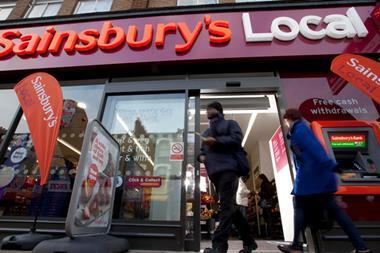
Retail leadership is more diverse than ever, according to a new report from the British Retail Consortium – but the dial is still not moving in all areas of industry.
The BRC’s Diversity & Inclusion annual report, out today, revealed the percentage of female board-level leaders has gone from 32.6% in 2021, when the first survey was conducted, to 42.3% in 2024.
The percentage of ethnic minority leaders on boards has also nearly tripled, from 4.5% to 12% over the same period.
And around two-thirds of businesses could identify at least one senior leader from the LGBTQ+ community, compared with 27% in 2021.
However, more than a third (35%) of retailers still have an all-white board, over half have no ethnic diversity on their executive committees, and areas such as social mobility and disability need “much greater focus”, according to the report.
The report showed inclusion sentiment by employees in the workplace was “generally low”, particularly around recognition and overall feelings of happiness.
Employees who chose “other” or “prefer not to say” to describe their sexual orientation, and those who are of black/African/Caribbean background, reported the lowest levels of feeling included in the workplace.
Additionally, only 11% of respondents said they could identify a disabled role model in their business.
BRC CEO Helen Dickinson said: “I am proud to see the strides retailers have made in just three short years to improve diversity – especially at a time when D&I could easily have been relegated to the sidelines in the face of a turbulent economic backdrop. But inclusion is the nut the industry still needs to crack.
“The progress made on diversity will only be meaningful and effective when it happens in tandem with a workforce where every employee feels happy and included.
“There needs to be greater focus on initiatives to change workplace culture to ensure we see this shift on inclusion,” she added. “Only then will we complete our mission in creating a truly diverse and inclusive industry.”

Nevertheless, diversity & inclusion now “sits high on many shareholder agendas” to ensure it is embedded throughout an entire business than it did years ago, the report noted.
Nearly all (98%) of retailers have a co-ordinated D&I strategy in place, while 67% of businesses now include social mobility in their D&I strategies, compared with just 20% in 2021, when the trade association first released the report in partnership with the MBS Group.
Since then, over 90 retailers are now signatories and have pledged to improve D&I by focusing on six areas – CEO oversight, recruitment, progression, reporting, inclusivity and responsibility.
“Promisingly, we’ve seen real progress since our research began in 2021,” said Elliott Goldstein, managing partner at The MBS Group.
“However, to ensure lasting change, retailers must continue to drive forward initiatives to ensure diversity across all characteristics, and commit to building work environments that are truly inclusive – particularly with the backdrop of today’s challenging trading environment.”



















No comments yet